The formation of rainbow and the calculation of the rainbow horn
Author:Institute of Physics of the Ch Time:2022.08.16
Thousands of years ago, people have been trying to explain the origin of the Rainbow, and Azak Newton provided the first truly convincing explanation in his 1704 works.
Ordinary white light is composed of the entire visible spectrum. By reflecting the light by using glass prisms, Newton can divide the light into the color of its composition. We now know that the color of light is determined by the wavelength or frequency of light: the longer the wavelength, the lower the frequency, the more red the light; the shorter the wavelength, the higher the frequency, and the blue. The angles of different wavelengths or frequencies are slightly different from the angle of the glass calmness of the glass, which is the reason for the diffusion of different colors and forming a continuous spectrum. Newton realizes that many different materials can also reflect light (including water), which is the key to understanding the rainbow to form a rainbow.
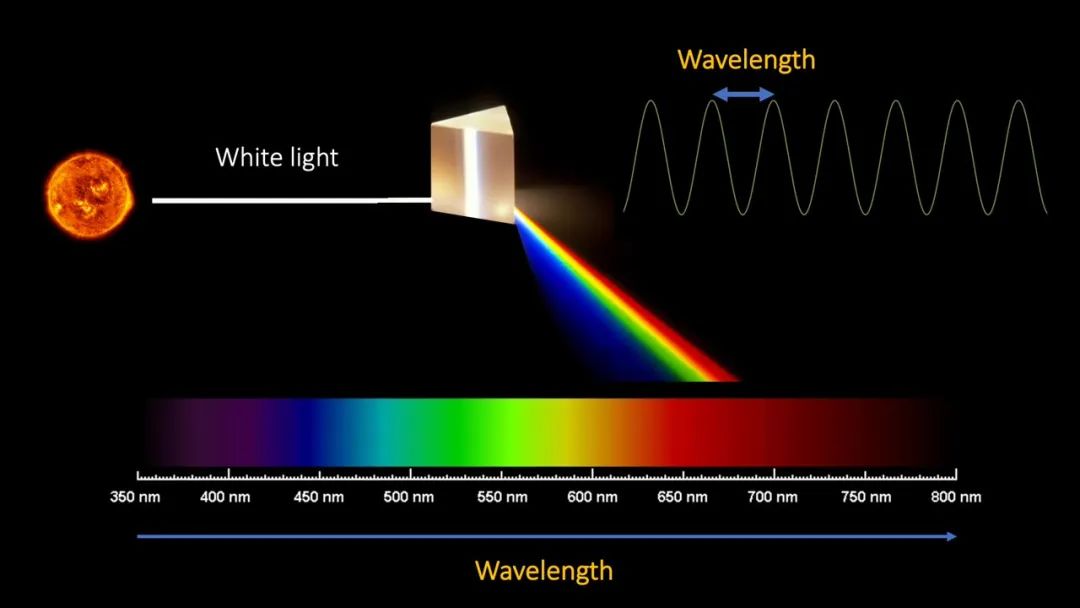
It has long known that in order to let someone observe that the rainbow requires three conditions. First of all, the sun needs to be behind you, second, there must be rain drops in front of you, and the third sun must be able to reach the raindrops directly without any obstacles (such as cloud).
The path of light in the droplet
Considering a bouquet of red light into the spherical droplet as shown in the figure below, we temporarily assume that the incident angle α is 45 degrees, and we hope to calculate the path when the light passes through the water droplet. To do this, we will use the Law of Sneur, which connects the incident angle α, refractive angle β and refractive index N. The refractive index is defined as the ratio of the speed of light in the vacuum to the speed of light in the research material.
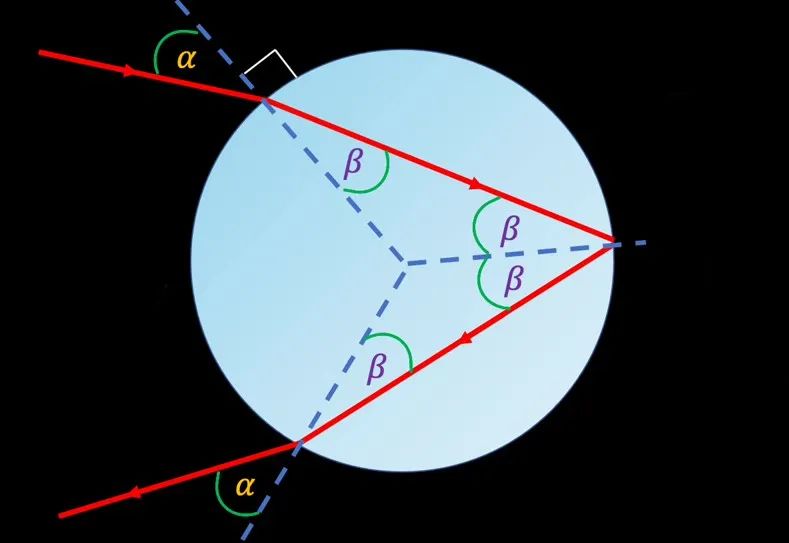
The speed of light in the air is very close to the speed of light, so we can assume that the refractive index of the air is about 1. On the other hand, the refractive index of red light in the water is 1.33. We can substitute this information into Sanier's Law, and we will find that the refraction angle is 32.12 degrees. So we can now determine the path when the red light moves inside the droplet. Since then, some light leaves the droplets, but it is important that the other part of the light reflection continues to spread in the droplet. The last part of the light is refracted again to leave the droplets with the same 45 degree angle as the droplet.
If we use a bouquet of blue light instead of red light, what will be different? In this case, the refractive index will change slightly, and now it is not 1.33 but 1.34. Although this does not seem to have changed much, when we substitute it into the Law of Sneur, it will produce a 31.85 -degree refraction angle, which causes the path of the blue light to the inside of the droplet. different. The difference between the refraction angle of each different color light causes the light to be scattered in each droplet and eventually produces the colorful belt of the rainbow.
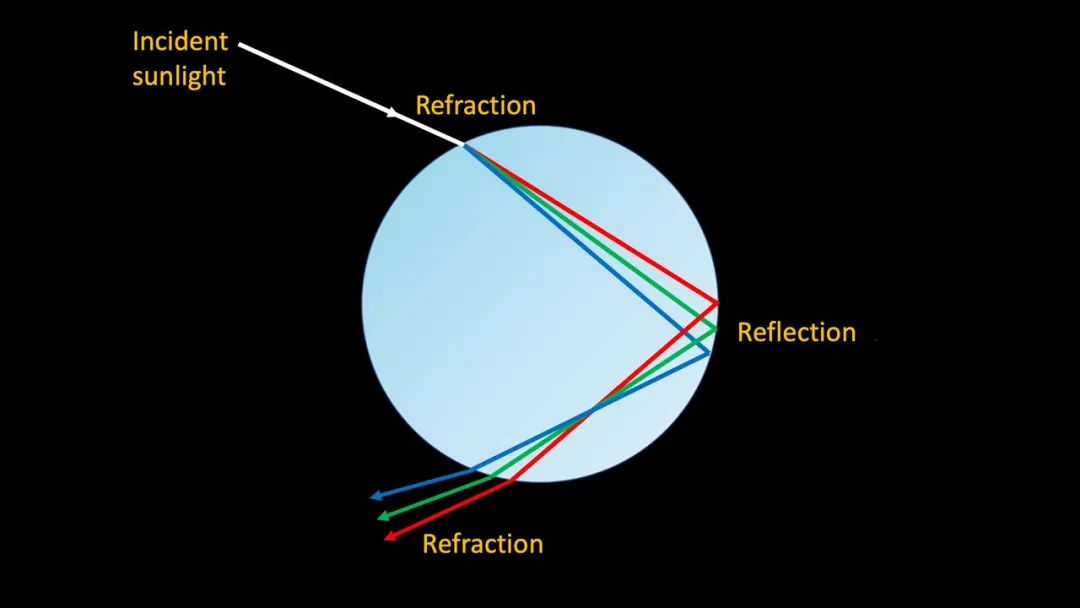
Calculation of Rainbow Horn
Next, let's take a closer look at the geometric shape, take red light as an example. After a beam of light incident into the droplets, the outlet light is almost reverse with the incident light. We can calculate the angle of the radiated light deviation from the incident light. This angle depends to a large extent on the incident angle α, so we marked this deviating angle to D (α). As shown in the figure below, we can mark all angles.
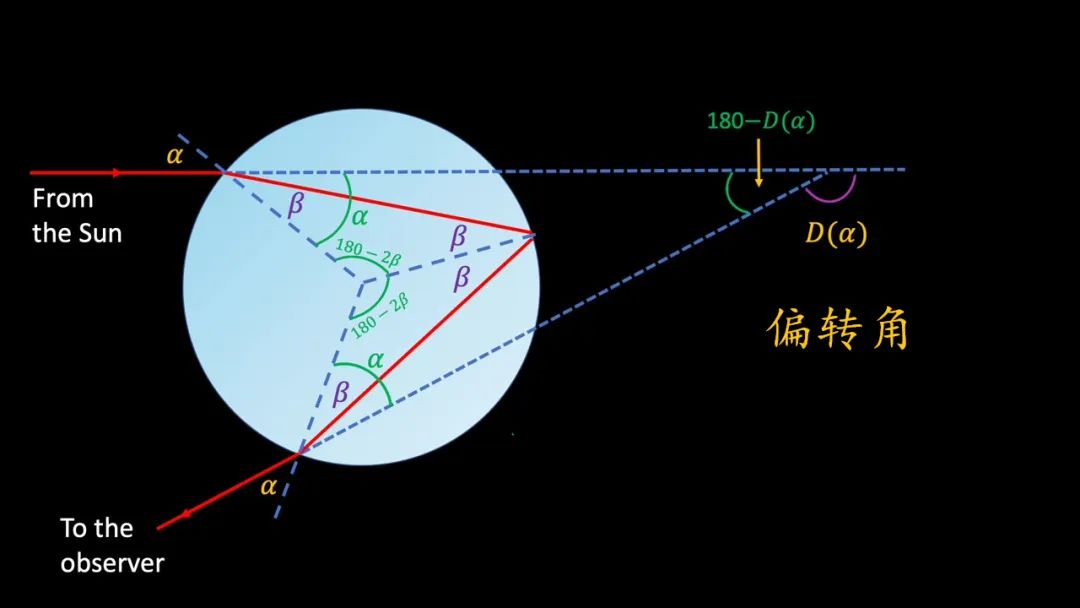
According to the inner angle and 360 degrees of the quadrilateral, we have the following formulas and simplify it:
We can use the Law of Sneur to allow the refractive index of the air to be 1, and the refractive index of water to the red light is 4/3, so we can get:
To substitute the final result, we can get:
For this result, the best way is to display it with a picture. We use D (α) as the vertical coordinates and α as the horizontal coordinate curve, as shown in the figure below.
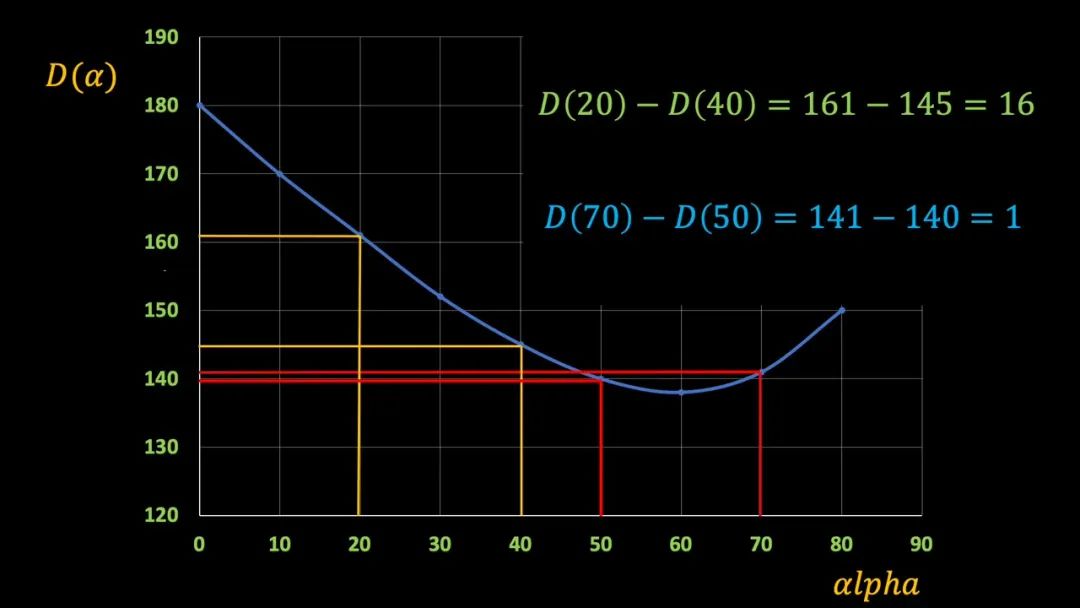
We can see a minimum point from the figure, first ask the value corresponding to this lowest point, and then analyze its meaning. At the lowest point, its guide number is zero:
In the end, we can calculate the incident angle α = 59.4 degrees, while the corner D (α) = 138 degrees. So what is the meaning of this lowest point? If we let the incident angle from 20 degrees to 40 degrees, it corresponds to the offset of the deflection angle D (20) -d (40) = 161-145 = 16 degrees; if the incident angle from 50 degrees to 70 degrees, the corresponding corresponds At the offset angle D (70) -d (50) = 141-140 = 1 degree of offset. In other words, when the angle α is near the minimum value, all deflection light tends to gather together, and the corner D (α) is equal to 138 degrees.
This kind of light accumulation with a 138 -degree biased angle means that the red light of this angle is brighter and more obvious. The corresponding observation angle 42 degrees is called the red light of the red light, which is the best angle we see red light. Essence In addition, through this method, we can also count about 40 degrees the Rainbow Horn of Blu -ray. Between these two angles, we can see the complete rainbow.

Sometimes we can also see the double rainbow, next to the main rainbow, there is a secondary rainbow that is not obvious. The above calculation is that the light reflects once in the liquid droplet. If the light reflects twice in the droplet, then the secondary rainbow is formed. Due to the limited space, it will not be calculated here.
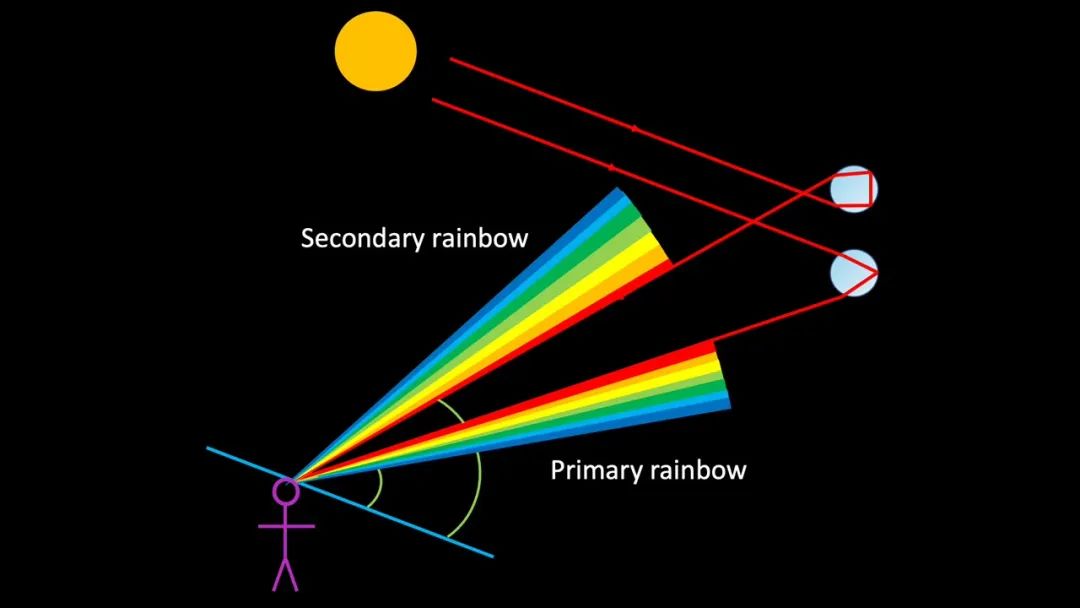
Reprinted content only represents the author's point of view
Does not represent the position of the Institute of Physics of the Chinese Academy of Sciences
If you need to reprint, please contact the original public account
Source: Vientiane experience
Edit: Cloud Kaiye
- END -
[Rural Reading Season] "I Love Reading 100 Days" Reading and Pickup Event has begun!

In order to meet the digital reading needs of farmers, and effectively cultivate f...
The "mobile phone brighter certificate" has become a habit, and the construction of Shandong Digital Strong Provinces brings these conveniences

In July 2021, Shandong's preparation and introduction of the Fourteenth Five -Year...